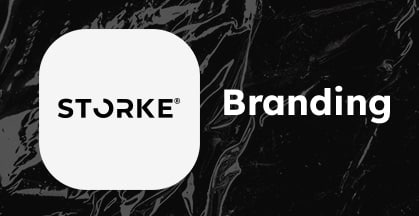An Example Of Customer-First Web Design
The main objective of having a website is to attract new customers and maintain the interest of existing ones. Hence, prioritizing customer-centric design features should be your top priority. After all, your business’s growth and success depend on your client’s satisfaction.
“Customer-first” has been a trending term for some years now, and it essentially means placing the needs of your customers above all else. However, implementing this concept, in reality, can be more complex due to various factors that come into play.
What exactly does it entail to have a web design that prioritizes the customer’s needs? What are the essential components required to capture their interest and retain it over a prolonged period? Providing exceptional customer experiences has always been the driving force behind loyalty. However, in today’s unpredictable times, people are quick to abandon businesses if they are not satisfied with any aspect. Therefore, it is crucial to excel in every aspect of your responsive website design. Your website serves as your online persona, and it is essential to captivate your users and keep them engaged.
Several factors contribute to a customer-centric web design, such as supporting causes that are significant to your customers and adhering to accessibility guidelines. A recent study revealed that approximately 88% of business leaders believe that customer engagement affects revenue. While you may not have control over every aspect, you can ensure that your website encompasses all the essential elements of a customer-first design to capture their attention and retain it on your page.
At Webloo, we offer website creation services and website design services to fulfill your needs for customer engagement while pushing the envelope. We have compiled a list of our top tips to develop a customer-centric approach. Some of these strategies may already be a part of your business model. It is up to you to determine which ones are most suitable for your company. Even minor modifications can make a significant difference in enhancing customer satisfaction.
1. Know Your Customers
To develop a website that caters to your customer’s requirements, it is essential to understand their characteristics. Once you know this, you can focus on other more exciting things like content services. Who are your typical clients in terms of demographics? Conduct surveys to determine their needs and expectations and how you can best assist them. Additionally, you can survey them to obtain feedback about your website. Are there any missing elements that could be beneficial, or do they appreciate certain aspects while disliking others? The more you comprehend, the more accurately you can design your website to meet their expectations. Developing buyer personas based on their preferences can also be helpful in this regard.
However, it is worth noting that customers may sometimes express one opinion while feeling differently. The reasons behind this phenomenon during surveys are unclear. To circumvent this issue, conducting A/B testing can provide insights into how customers truly feel about various modifications. By doing so, you can determine whether their responses align with your initial expectations and identify any necessary changes.
2. Selecting a Suitable Color Scheme
Each industry tends to gravitate toward specific colors. For instance, the banking sector frequently employs shades of blue, with occasional accents of red. Blue instills trust and has a calming effect on users. In contrast, the fashion industry may incorporate brighter colors like lime green. It is crucial to consider the colors typically associated with your industry and then select a suitable color palette.
It is worth noting that each color has its unique emotional impact. For instance, red is associated with power and can evoke excitement in viewers. Therefore, it is vital to choose your colors wisely to elicit the desired emotional response and align with your brand development.
3. Hear from your customers
Incorporating feedback from your audience is an effective way to enhance your website over time to meet their requirements and preferences. You can facilitate this process by adding review sections, placing feedback forms in your website’s footer, and requesting feedback from your mailing list. Additionally, seeking guidance from a mentor who has experience running a successful business can be beneficial. They can evaluate your website and offer constructive feedback. Moreover, engaging the services of a marketing professional can be advantageous.
4. Keep it Familiar
Are you familiar with Jakob’s Law? This principle suggests that individuals tend to favor design patterns that they are already familiar with. When users encounter a familiar design, such as a standard navigation bar layout, it can elevate their mood and enhance their recollection of the website.
When making modifications to your website, avoid making significant changes all at once. Instead, implement minor adjustments gradually over time, allowing your audience to adapt to the changes gradually.
5. Keep It Simple
To create a captivating and engaging web page, it is essential to minimize the number of choices available to the user. An excess of options can be overwhelming and cause users to feel uncertain about where to begin.
Begin by selecting a specific objective for the page and removing any elements that do not contribute to achieving that goal. In an ideal scenario, the page should contain a brief description, an image, and a call-to-action (CTA) button. However, this may vary depending on the user’s position in the sales funnel and the amount of information they require before making a purchasing decision.
6. Be Friendly…to Mobile Devices
According to recent reports, nearly 90% of people use mobile devices to access the internet. With the increasing capabilities of smartphones and the advent of 5G networks, mobile browsing is expected to become even more prevalent. It’s essential to ensure that your website is optimized for mobile devices, both for the benefit of your business and your customers. Test everything thoroughly, including links, forms, and image and text resizing, to ensure a seamless experience for mobile users.
7. Landing Page Central
Since your business has multiple buyer personas, it’s crucial to create landing pages that cater to each persona’s needs. Avoid using a single generic home page as it may not address every reader’s needs. Instead, design tailored pages for each persona to achieve better results.
Use the language and tone that resonate with each group. Understand the specific pain points of each audience and how your product can help solve them. This way, you can effectively target your messaging and increase your chances of converting visitors into customers.
8. Prioritize important information at the top
In today’s fast-paced world, people have busy lives and may visit your site during a short break. Therefore, it’s essential to provide the necessary information upfront without making them search for it.
To achieve this, place the critical headlines and information above the fold, where users can see them immediately. Use clear and readable headings and subheadings, and consider including bullet points to make the content easily digestible. If possible, add a video that showcases the main benefits of your product or service since people tend to absorb information better through videos.
Moreover, consider placing a CTA button above the fold, depending on your design. Some users may already have read the content and want to take action right away, so make it easy for them to find the CTA button.
Step Into Your Customers’ Shoes
Consider your website from the perspective of your customers. Determine what is effective and what needs improvement. Over time, you will create a customer-focused web design that resonates with those who are most likely to purchase from you. Continuously make modifications and fine-tune your website until it achieves the ideal equilibrium for your audience.
Overall
Your digital strategy should fit the unique requirements of your business and target audience. There is no one-size-fits-all approach, so it’s important to discover what works best for your company and monitor the impact of each action on your overall success.
As a creative agency, we offer website design, app design, brand development, and content services. Schedule a call to see how we can help you with our unique integrated marketing strategy.
What does your business need?
Schedule a Strategy SessionYou may also like












